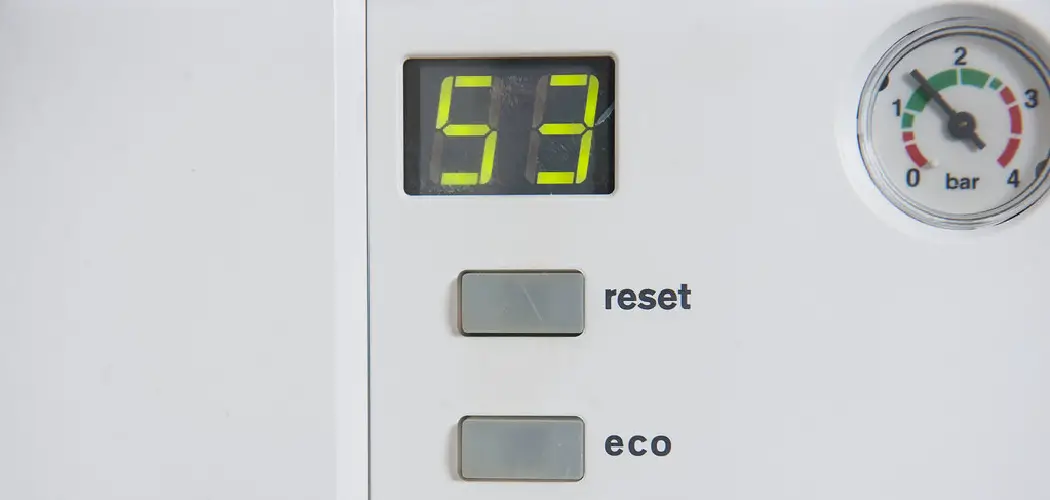Welcome readers! If you’re a homeowner, then chances are you’ve experienced the frustration of a malfunctioning boiler. Whether it’s the dead of winter or guests are coming over for a hot shower, having no heat and hot water can be incredibly stressful. But fear not, for in this blog post we will guide you through the process of resetting your boiler.
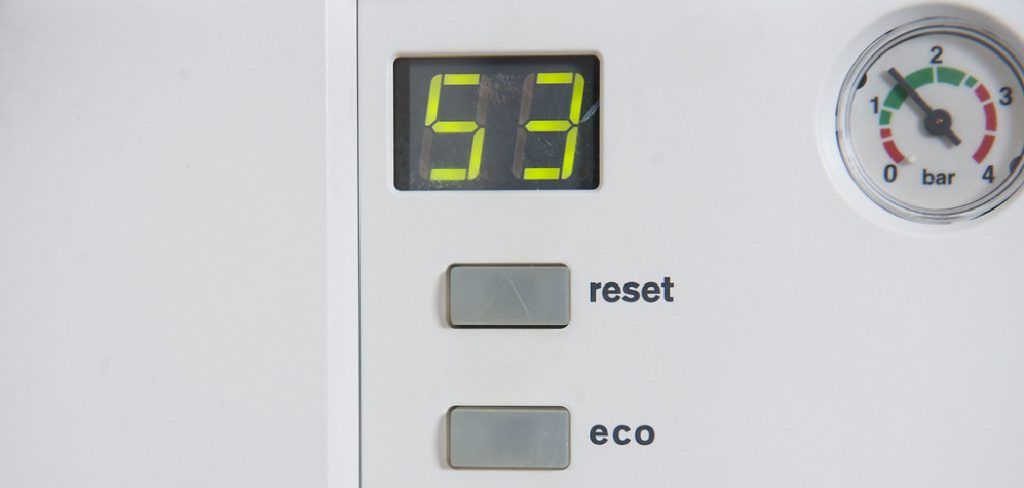
From explaining what exactly is happening when it needs to be reset to providing step-by-step instructions on how to reset the boiler yourself, we’ve got you covered. So grab a cup of tea (or coffee if that’s more your style) and get ready to say goodbye to cold showers and hello to warm cozy nights at home. You’ll soon discover just how easy it is to become a boiler-resetting pro!
Necessary Materials
Before we delve into the process of resetting your boiler, let’s first make sure you have everything you need. Here are the materials that will come in handy for this task:
- Boiler Manual (if Available)
- Screwdriver
- Matches (if Your Boiler Uses a Pilot Light)
- Boiler Reset Button (if Applicable)
- Gloves (Optional)
10 Simple Step-by-step Guidelines on How to Reset the Boiler
Step 1: Identify the Type of Boiler You Have
To begin with, you need to identify the type of boiler you have. For example, is it a gas or an electric boiler? This information can typically be found in your boiler manual or by contacting a professional for assistance.
You can also check the exterior of your boiler for any labels that indicate the type. But be sure to only reset your boiler if you feel comfortable and confident doing so. It’s always recommended to consult a professional if you have any doubts or concerns.
Step 2: Locate the Reset Button
If your boiler has a reset button, it is often located on the front panel of your unit. It may be labeled as “reset” or “reboot”. If you can’t find it, refer to your manual for its exact location. It’s also important to note that not all boilers have a reset button, but don’t worry, we’ll cover alternative methods later on. It’s always a good idea to familiarize yourself with the reset button and where it is located before an emergency situation arises.
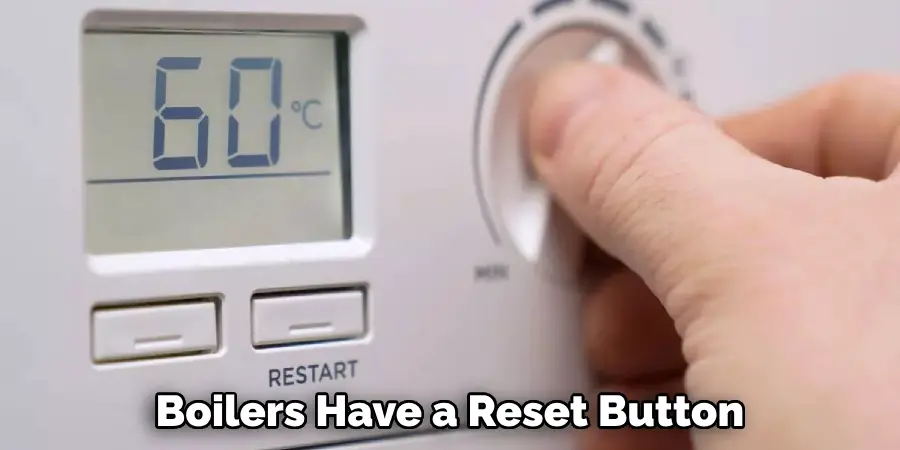
Step 3: Turn off the Boiler
Before attempting to reset your boiler, you must first turn it off. This can usually be done by using the main power switch or by unplugging the unit if it is electric. If you have trouble locating the main power switch or if it is not easily accessible, you may need to turn off the boiler’s supply at the fuse box. You can also turn off the gas supply if your boiler is gas-powered.
Step 4: Wait for the Boiler to Cool Down
After turning off the power, you’ll need to wait for your boiler to cool down. This can take anywhere from 15-30 minutes depending on the type of boiler and its temperature. It’s important not to skip this step as it could be dangerous to attempt resetting a hot boiler. It’s also a good time to grab your gloves, just in case.
Step 5: Find and Check the Pilot Light (if applicable)
For boilers that use a pilot light, it’s important to check if the flame is out before resetting. The pilot light is a small gas burner that should always be lit. If you notice that the flame is out, do not attempt to reset your boiler and instead contact a professional for assistance.
It’s also important to note that if you smell gas, turn off the supply immediately and call a professional.
Step 6: Press and Hold Down the Reset Button
If your boiler has a reset button, press and hold it down for approximately 5 seconds. This should be long enough for the boiler to reset itself. If your boiler does not have a reset button or if pressing it did not work, proceed to the next step. You can also refer to your manual for any specific instructions on how to reset your boiler.
Step 7: Locate and Turn on the Boiler’s Main Power Switch
If you turned off the main power switch earlier, now is the time to turn it back on. If your boiler does not have a main power switch, you can go ahead and plug it back in if it’s electric. For gas boilers, turn on the supply at the fuse box. It may take a few minutes for the boiler to start up, so be patient. But if nothing happens, proceed to the next step.
Step 8: Wait for Your Boiler to Restart
After turning on the power, wait for your boiler to restart. This can take a few minutes, so be patient. If the boiler does not start up after a few minutes, contact a professional for assistance. It’s always better to be safe than sorry, especially when dealing with electricity and gas. You can also refer to your manual for any troubleshooting tips.
Step 9: Observe Your Boiler’s Behavior
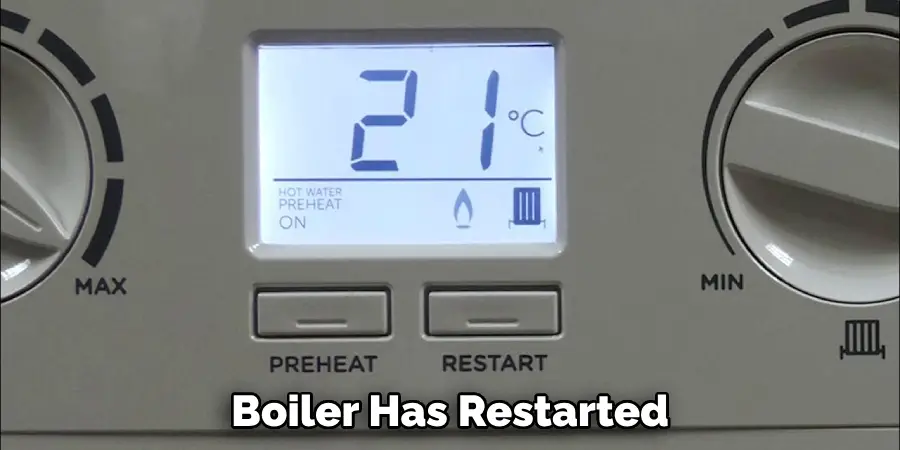
Once your boiler has restarted, observe its behavior. Is it functioning properly? Are there any error codes or warning lights? If everything looks normal, then congratulations, you’ve successfully reset your boiler! But if you notice any issues or strange behaviors, do not attempt to fix them yourself and instead seek professional help.
Step 10: Keep the Manual Handy for Future Reference
Now that you have successfully reset your boiler, make sure to keep the manual handy for future reference. It’s always a good idea to familiarize yourself with your boiler and its reset process before an emergency situation occurs.
This will save you time and stress in the long run. It’s also a good idea to schedule regular maintenance checks for your boiler to ensure it is working properly and efficiently. This will help prevent any unexpected issues in the future.
Following these simple guidelines will ensure that you can confidently reset your boiler whenever necessary. Remember to always prioritize safety and consult a professional if you have any doubts or concerns. Now go ahead and enjoy your warm, cozy nights at home without worrying about any boiler malfunctions! Happy resetting!
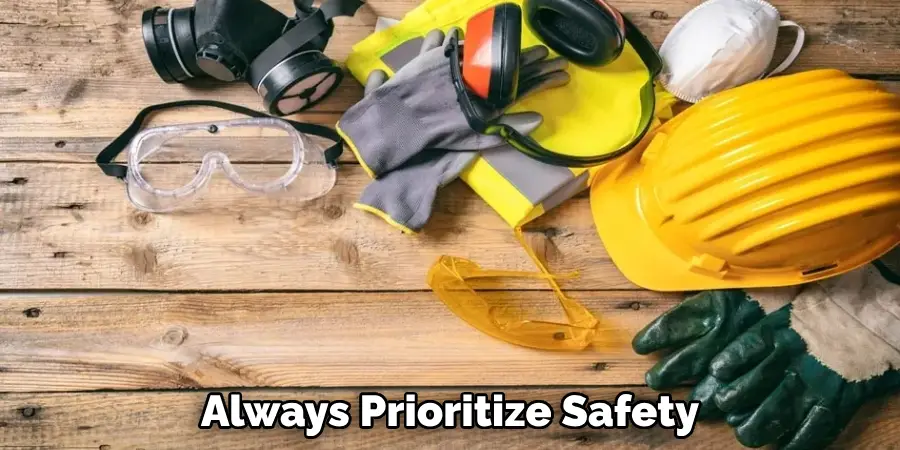
Frequently Asked Questions
Q. What Should I Do if My Boiler Does Not Have a Reset Button?
A. If your boiler does not have a reset button, you can try turning off the power and turning it back on after a few minutes. If this does not work, consult your manual or contact a professional for further assistance. Some boilers may also have a reset switch located inside the unit, so it’s always a good idea to check there as well.
Q. Why is it Important to Turn off the Boiler Before Resetting?
A. Turning off the boiler before resetting is important for safety reasons. It allows the boiler to cool down and prevents any potential hazards that could occur if you were to reset a hot boiler. Always remember to prioritize safety first.
Q. Can I Reset My Boiler if I Smell Gas?
A. No, if you smell gas, do not attempt to reset your boiler and immediately turn off the gas supply at the source. This could be a sign of a gas leak and it’s important to contact a professional right away for assistance.

Conclusion
In conclusion, maintaining and resetting your boiler may seem like a daunting task, but with the proper knowledge and attention, it can be easily managed. The first step is to understand the common issues that may arise and how to troubleshoot them.
From there, regular maintenance and check-ups can ensure that your boiler stays in top condition and continues to provide efficient heating for your home. And if you do run into any problems, don’t hesitate to call a professional for help – it’s better to address the issue early on rather than wait for it to worsen.
Remember, taking care of your boiler not only ensures its longevity but also keeps you and your loved ones warm during the colder months. So take the time to reset your boiler when necessary and incorporate these tips into your routine – your cozy home will thank you! If you found this blog post helpful, please share it with others who may benefit from it as well.
With these final thoughts on how to reset the boiler in mind, I urge you to take charge of your boiler’s maintenance and be proactive in addressing any potential issues. Your future self will thank you for taking care of things now before they become major problems.
Let’s keep our homes warm and our boilers happy! Trust me, as someone who has gone through the frustration of dealing with a malfunctioning boiler during the dead of winter, I can assure you that taking preventive measures is well worth it. Thank you for reading this post – I hope you have learned something valuable today! And don’t forget to subscribe for more helpful tips and tricks on home maintenance. Until next time!

